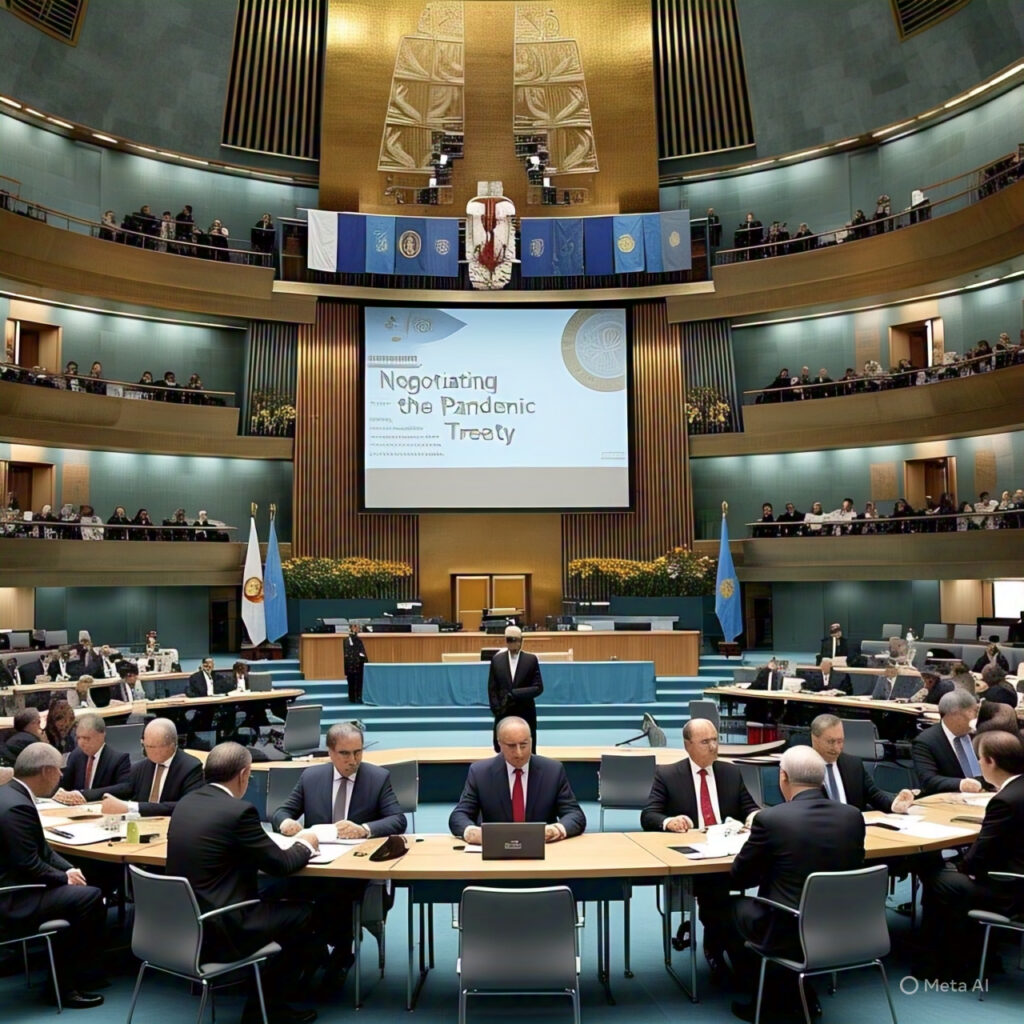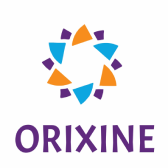A Watershed Moment for Global Health: Why the WHO Pandemic Treaty is a Game-Changer for Equity and Preparedness

By Aniekan Akpan and Peace Ene Idoko
Introduction: The Global Reckoning After COVID-19
When COVID-19 swept across the globe, it shattered not only millions of lives but also the illusion that the world was prepared for a pandemic. From the earliest days of the outbreak, we witnessed an all-too-familiar pattern of panic, protectionism, and profound inequities. Rich countries hoarded vaccines, diagnostics, and treatments while low- and middle-income countries waited in vain. Health systems collapsed under pressure, misinformation spread faster than the virus, and trust in international institutions wavered.
Yet, amid the wreckage, there emerged a collective realization: never again can we afford to approach a global health emergency with such fragmentation and inequity. This conviction galvanized the world’s nations into action, culminating in what could be the most significant development in global health governance since the creation of the World Health Organization (WHO) itself—the Pandemic Treaty.
After over three years of intense negotiations, diplomatic wrangling, and advocacy from every corner of the globe, the WHO announced on April 16, 2025, that the Member States had agreed on the final draft of a legally binding treaty on pandemic prevention, preparedness, and response. This treaty, born of hard lessons and hope for a more just future, is set to be submitted for adoption at the upcoming World Health Assembly.
As public health enthusiasts, we believe this treaty is not just another bureaucratic exercise—it is a turning point. It is the world’s attempt to codify solidarity, enshrine equity, and create a durable framework that will serve as our collective shield against future pandemics.
The Genesis of the WHO Pandemic Treaty
The journey to this historic agreement began in March 2021, when a group of global leaders—including then UK Prime Minister Boris Johnson—called for a new international instrument to prevent a repeat of the devastation wrought by COVID-19. The proposal gained swift traction, and by December 2021, the Intergovernmental Negotiating Body (INB) was established by the World Health Assembly with a mandate to draft a treaty under Article 19 of the WHO Constitution—the same provision used to create landmark health instruments like the Framework Convention on Tobacco Control.
The goal was clear: develop a legally binding agreement that would strengthen global collaboration, enhance national preparedness, and ensure that when the next pandemic strikes, we are ready—not just in words, but in deeds.
However, the path to consensus was anything but smooth. Negotiations were marred by deep divisions between developed and developing countries, disputes over intellectual property rights, and differing visions of sovereignty and solidarity. Despite missing the initial May 2024 deadline, the INB persisted. And now, with the conclusion of the negotiations, we stand at the cusp of a new era in global health governance.
A Treaty Rooted in Equity and Justice
At its core, the Pandemic Treaty is a recognition of a fundamental truth: health is a human right, not a privilege. The COVID-19 pandemic exposed systemic failures that disproportionately harmed the world’s poorest and most vulnerable populations. This treaty seeks to redress those imbalances by embedding equity at every level of pandemic response.
The Pathogen Access and Benefit-Sharing System (PABS)
One of the treaty’s most innovative and potentially transformative provisions is the creation of a Pathogen Access and Benefit-Sharing System (PABS). This mechanism ensures that when countries share information and samples of dangerous pathogens, they are guaranteed fair access to the benefits that arise—vaccines, diagnostics, therapeutics—during a pandemic.
This is a direct response to the “vaccine apartheid” witnessed during COVID-19. Under PABS, manufacturers have agreed to donate 10% of their pandemic-related products to the WHO and offer another 10% at affordable prices. Though some critics argue this does not go far enough, it represents a monumental shift in how the world approaches global public goods.
As Aalisha Sahukhan, Fiji’s lead negotiator, eloquently stated, “There was a point in the negotiations when there was a real feeling that some developed countries just would not accept any set-asides, which would have been devastating to the treaty itself because the inequities regarding vaccines, therapeutics, and diagnostics were just so prominent during COVID-19.” The fact that an agreement was reached is testament to the moral force of the demand for health justice.
Technology Transfer: Sharing the Recipe, Not Just the Cake
Another key pillar of the treaty is its provisions on technology transfer. Developing countries, long dependent on the pharmaceutical capabilities of the Global North, have pushed for mechanisms that would allow them to manufacture pandemic health products themselves.
During negotiations, Article 11—dealing with technology transfer—became one of the most contentious issues. Wealthier nations with powerful pharmaceutical lobbies resisted any language suggesting mandatory technology transfer, arguing that it must be voluntary to respect intellectual property rights. Developing countries, on the other hand, demanded a fairer system that would allow them to build self-reliance and reduce dependency.
The compromise? Technology transfer will occur on “mutually agreed terms,” a phrase that ensures flexibility but leaves much to be desired in terms of enforceability. Nonetheless, the treaty opens the door for more equitable collaborations and capacity-building, marking an important step toward health sovereignty for the Global South.
As Alexandra Phelan, a global health lawyer, noted, “That word, ‘voluntary,’ was a red line for a number of countries—and in both directions.” But even this imperfect agreement sets a precedent for future advocacy.
Sovereignty and Multilateralism: A Delicate Balance
Critics of the treaty have raised concerns about national sovereignty, fearing that the WHO could gain undue influence over domestic health policies. These fears, often stoked by misinformation, have been decisively addressed in the treaty’s text.
The treaty explicitly affirms that countries retain full sovereignty over their public health measures. Nothing in the agreement empowers the WHO to impose lockdowns, vaccine mandates, or override national legislation. Instead, the treaty is about cooperation, not coercion. It encourages countries to align their efforts while respecting national autonomy—a delicate but essential balance for any effective global governance framework.
One Health and Resilient Health Systems
The treaty is forward-looking in its embrace of the One Health approach, recognizing the interconnectedness of human, animal, and environmental health. This holistic perspective is crucial in preventing zoonotic diseases and ensuring that pandemic prevention starts before the first human infection.
Moreover, the treaty urges countries to build resilient health systems, invest in primary care, train a skilled health workforce, and maintain robust supply chains. The COVID-19 pandemic showed us that weak health systems anywhere pose a risk everywhere. The treaty seeks to close these gaps through international cooperation and technical assistance, especially for developing countries.
Institutional Mechanisms: Governance and Accountability
To ensure that the treaty’s lofty goals are met, it proposes the establishment of a Conference of the Parties (CoP). This body will oversee the implementation of the treaty, review progress, and provide strategic direction. Accompanying this are mechanisms for accountability, including regular assessments, reporting requirements, and platforms for civil society engagement.
The treaty also calls for the creation of a Global Supply Chain and Logistics Network (GSCL), aimed at coordinating the distribution of medical countermeasures and preventing the kind of supply bottlenecks that plagued the COVID-19 response.
The Impact: A Blueprint for a Safer World
If adopted and implemented effectively, the Pandemic Treaty could be transformative. It promises to:
- Reduce global health inequities, ensuring timely access to life-saving interventions for all.
- Strengthen national and global preparedness, building more robust and agile health systems.
- Promote transparency and trust, with mechanisms for data sharing, collaborative research, and public accountability.
- Foster solidarity, moving away from the toxic nationalism that hindered the COVID-19 response.
Importantly, this treaty could serve as a unifying force in times of crisis, countering the political fragmentation and disjointed responses that cost countless lives during the last pandemic.
What’s Next: The Road to Ratification
The treaty will enter into force one month after 60 countries ratify it. The upcoming World Health Assembly, starting May 19, 2025, will be the decisive moment. The world will watch as nations decide whether to endorse this historic instrument.
As WHO Director-General Dr. Tedros Ghebreyesus said, “The importance of this agreement goes beyond our current challenges,It is vital for future generations – for our children and grandchildren. By building a strong framework for pandemic preparedness and response, we ensure they inherit a safer and healthier world.”
“The nations of the world made history in Geneva today,” said Dr Tedros “In reaching consensus on the Pandemic Agreement, not only did they put in place a generational accord to make the world safer, they have also demonstrated that multilateralism is alive and well, and that in our divided world, nations can still work together to find common ground, and a shared response to shared threats.
“This achievement is not just a diplomatic success,” he said. “It reflects your resilience, unity and unwavering commitment to the health and wellbeing of people everywhere.”
As the world reflects on the lessons of the COVID-19 pandemic, the successful negotiation of this treaty represents a collective effort to better prepare for and respond to future global health emergencies.
Bibliography
Biever C, ‘First Global Pandemic Treaty Agreed — without the US’ [2025] Nature <https://www.nature.com/articles/d41586-025-00839-0>
Kupferschmidt K, ‘Global Pandemic Treaty Finalized, without U.S., in “a Victory for Multilateralism”’ [2025] AAAS Articles DO Group <https://www.science.org/content/article/global-pandemic-treaty-finalized-without-us-victory-multilateralism> accessed 25 April 2025
Mishra V, ‘Countries Finalize Historic Pandemic Agreement after Three Years of Negotiations’ (UN News16 April 2025) <https://news.un.org/en/story/2025/04/1162301> accessed 25 April 2025
Monde L, ‘Landmark Pandemic Treaty Concluded after Years of Talks’ (Le Monde.fr16 April 2025) <https://www.lemonde.fr/en/health/article/2025/04/16/countries-approve-landmark-pandemic-treaty-after-years-of-talks_6740273_14.html?utm_source=chatgpt.com> accessed 25 April 2025
Reed J, ‘World Health Organization Agrees Legally Binding Pandemic Treaty’ BBC (16 April 2025) <https://www.bbc.com/news/articles/c7vn1r3ge2jo>
‘The Pandemic Agreement – What It Is, and What It Is Not | CEPI’ (Cepi.net2025) <https://cepi.net/pandemic-agreement-what-it-and-what-it-not> accessed 25 April 2025
World, ‘WHO Member States Conclude Negotiations and Make Significant Progress on Draft Pandemic Agreement’ (Who.int16 April 2025) <https://www.who.int/news/item/16-04-2025-who-member-states-conclude-negotiations-and-make-significant-progress-on-draft-pandemic-agreement?utm_source=chatgpt.com> accessed 25 April 2025
